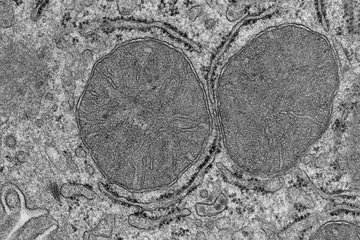Clock for brain waves
Inhibitory neurons and electrical synapses determine the frequency of rhythmic activity in the brain
Oscillations of brain activity influence our attention and many other mental functions. Tatjana Tchumatchenko from the Max Planck Institute for Brain Research in Frankfurt and Claudia Clopath from Imperial College London have now developed a theoretical model that explains the origin of such oscillations in neural networks. Inhibitory neurons and electrical synapses play key roles and could therefore serve as targets for new drugs.
Alpha and gamma brain waves, which are visualized by means of electroencephalography (EEG) measurements, can provide doctors with information about a patient’s mental state for diagnostic purposes. The mysterious term “brain waves” denotes nothing more than synchronous oscillations in the activity of groups of neurons that are often spread over large parts of the brain. The Greek letters indicate the oscillation frequency, which ranges from one hertz for alpha waves to several hundred hertz for theta waves. The waves act as a clock for the human brain and control attention, perception and memory formation.
The results of numerous experimental studies have shown that certain classes of neurons exert greater influence on network oscillations than others. Inhibitory neurons, which make up about 20 percent of the nerve cells in the cerebral cortex, appear to play a key role in the generation of brain waves. However, it is unknown how inhibitory neurons control these oscillations. Because brain waves are a network phenomenon, it is also not clear how the properties of individual cells are reflected in network dynamics, or whether only synaptic connections are important.
Tatjana Tchumatchenko from the Max Planck Institute for Brain Research in Frankfurt and Claudia Clopath from Imperial College London are convinced that mathematics can deepen our understanding of the phenomenon of brain waves. In their joint work, they developed a mathematical framework that models the activity of excitatory and inhibitory neurons in a network such as the human cerebral cortex. “We are able to reliably reproduce results from previous experiments using an analytical and numeric approach and our mathematical model has revealed two new conditions essential for the emergence of brain waves,” says Tatjana Tchumatchenko. “First, the individual inhibitory neurons must exhibit subthreshold resonance of the membrane potential at the preferred network oscillation frequency, i.e. they have to oscillate in time, although their electrical impulses do not necessarily reveal this oscillation.” But the type of synaptic connectivity is also important, as oscillations occur only if the inhibitory neurons are interlinked by electrical synapses of sufficient connection strength.
Until recently, electrical synapses in the cerebral cortex were largely unknown, but are now known to occur in many areas of the brain. However, only inhibitory neurons are electrically coupled. This type of signal transmission has not been observed between excitatory neurons.
Inhibitory neurons and their synaptic connections therefore play a central role, say the researchers: “Amazingly, our model shows that the oscillation frequency of the entire network is determined only by the properties of inhibitory neurons and their connections, despite the fact that the majority of neurons are of the excitatory type,” says Claudia Clopath. “Of course,” she adds, “the properties of excitatory neurons help shape the dynamics of the network, but they only determine the amplitude of brain waves, not their frequency of oscillation.”
The knowledge gained will advance our understanding of complex systems and help explain the interplay between single network units and the arising network dynamics. The research results may also contribute to the development of more targeted drugs that could improve the chances for successful treatment in psychiatric care.
AD/HR











